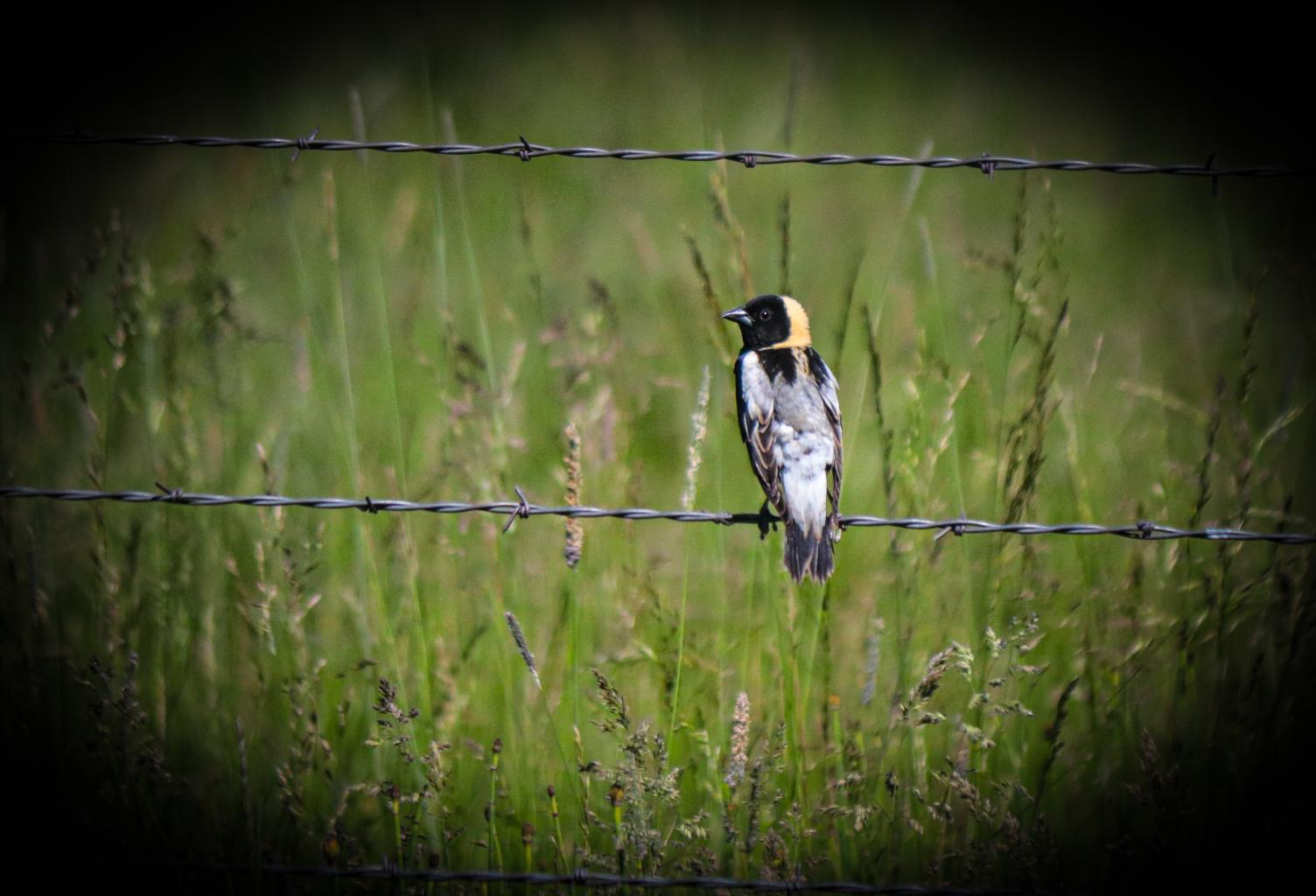Bobolink Prairie
Home » Birding Locations » Crook County » East Of Prineville
Seasons
Checklists
Location
From the town of Paulina in Eastern Crook County, drive 3.7 miles east to Beaver Creek Road. Turn left (north) and drive 2.3 miles to Puett Road. Turn right (east) and drive 5.5 miles to the prairie. Remember that this is private land and you are not allowed to cross any fence. Viewing is strictly from the road.
DirectionsHabitat and Birds
Search both sides of the road for species that like flooded fields. White-faced Ibis are sometimes seen after the breeding season in late July or early August (and occasionally in the spring). Willet arrive in early May and nest here. Sandhill Cranes can be found as early as March and they often will nest here. Long-billed Curlews are often seen in April through mid-May but most will head into the dry hill sides to breed. Wilson’s Snipe are constantly winnowing from late May through June and will throughout the season as long as there is water. Keep an eye and ear out for Savannah Sparrow and Common Yellowthroat. Blackbirds include Brewer’s, Red-winged, Western Meadowlark, and Brown-headed Cowbird. Raptors include Northern Harrier, Ferruginous Hawk, and Prairie Falcon. On either end of the prairie, sage flats provide easy viewing of Brewer’s Sparrow, Vesper Sparrow, Horned Lark, Sage Thrasher, and Western Meadowlark. For the lucky traveler, keep your eyes open for Burrowing Owl, Short-eared Owl, and Sage Grouse. They’re not often seen but do occasionally turn up. Drive east from the prairie on Puett Road and look for rimrock areas to your left. Chukar commonly call from those rocks and can often be seen perching on rocks if you have a scope.
By far, the star of this show are the Bobolinks. This meadow is actually a farm field but it contains many native grasses and the Bobolinks have nested here for as long as any of the locals can remember. Bobolinks begin arriving at the end of May and the full flock will be evident around June 1. This is a good time to catch them as the grass is likely to be shorter and they spend most of their time on the ground. Females are rarely seen until the young fledge in mid-July. Once the young fledge, the males lose their breeding plumage and the flock disperses usually before August. Get there early in the morning for best results and you may have to use some playback to get the birds to perch above the grass. Do this sparingly. It’s best to drive back and forth on the road and, eventually, a nice male may perch right in front of you on the wild roses.


Discussion